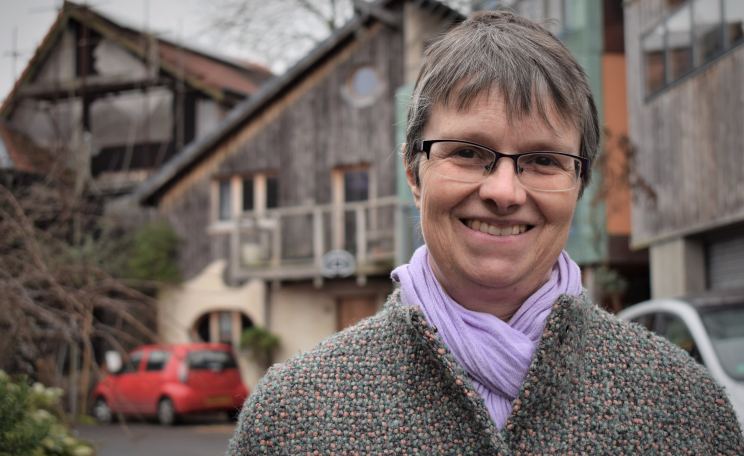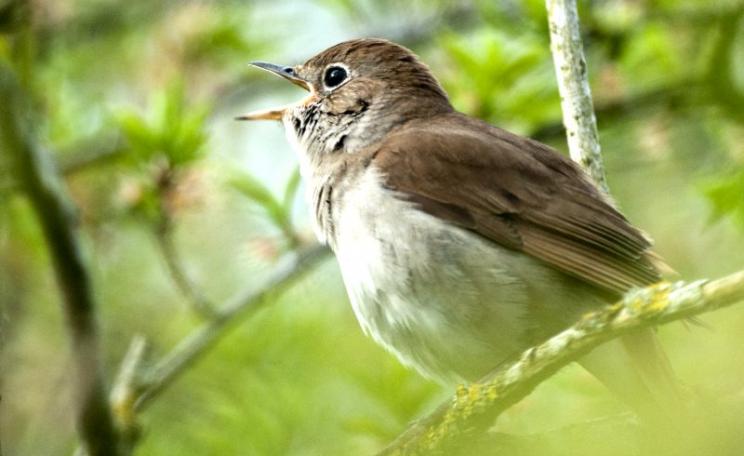Anton Krupicka. Credit: Joel Wolpert thewolpertinger.com
We love nature - her beauty, seasons, moods and immensity are enthralling and comforting... But how can we connect with all that deeply? In our modern society, it’s easy to feel cut off from the natural world.
Ultra runner Anton Krupicka’s answer is to run amid nature and the bigger, the better. His daily workout, as documented in the beautiful new film In The High Country, is often a 14,000ft peak in the Rocky Mountains.
In case you’re unfamiliar with the world of ultra running, Krupicka is one of its biggest stars. A U.S. athlete with some of the sport’s great races under his belt, including the 100-mile Leadville Trail (known as The Race Across The Sky), which reaches 12,600ft, he is at the top of his game.
This gorgeous new film by Joel Wolpert is described as ‘an impressionistic mountain running film: a visual essay about a life in the mountains.’ This is pornography for nature lovers – our eyes are indulged with wide camera shots of the mighty Rocky Mountains, glowing copper and green in the sun, their rugged peaks stretching for miles.
But most of all, the film reveals how Anton has managed to become one of the world’s greatest ultra runners – it is born from a daily and deeply passionate relationship with the mountains on his doorstep. He trains in Leadville, Colorado, which sits high up in the Rockies, at 10,000ft. Come snow, come sun, he is out there running. Joel’s camera follows his feet as they race through mountain forests, scale sheer rock faces and take him up, up, up high until he is standing on top of the world.
While some may consider running no more than mundane pavement pounding, to Krupicka it is clearly tied to the wild, both outside him and inside him. It’s his way of finding himself, done religiously, day in day out.
“The mountain teaches our insignificance, as well as our agency,” says his narrative, in the film. “In this search, with this accumulated knowledge, there are times when the borders blur between landscape and self, between human and mountain, when the integration of self and place feels seamless. And that is when the mountains truly become home.”
In the last few years, we have become more aware of how human it is to run in the wild. In 2009, Christopher McDougall’s book Born To Run (£8.99, Profile Books) brought barefoot running and persistence hunting to the world’s attention. We now know that we survived and thrived as a species because we can outrun other animals. They may be faster than us, but our huge breathing apparatus and ability to sweat (and therefore cool down) means that eventually we catch them up.
Before the invention of cushioned shoes, we ran barefoot, landing on our fore to mid-foot, rather than our heels. McDougall and many others insist that this is the most efficient way to run – it is what our anatomies are designed for. Done well, it looks far more graceful and natural than heel strike running.
Krupicka is one of many top runners now using this ‘barefoot’ technique. Like McDougall, he tried it after suffering strains and injuries with the traditional heel strike technique. If you want to know what elegant fore to mid-foot running looks like, watch this film. Everything about Krupicka’s run is natural, effortless and light.
We often think of running as something you ‘just do’, unlike tennis or rollerskating, which are techniques that must be practiced over and over. But this new fore to mid-foot running (true human running, some say) is an art form and an acquired skill. Many people make the mistake of rushing out to buy a pair of the new minimalist ‘barefoot’ shoes and doing 5k in them, only to wake up with dead calves the next morning.
The transition to fore to mid-foot running must be gradual. Of course, this is akin to getting in a Ferrari and going around the block at 20 miles an hour. Barefoot-style running feels so good that it’s hard to hold back! But eventually, over time, you will be able to put your mid-foot on the gas and still walk the next day.
Eric Orton, the coach who taught Christopher McDougall to run on his fore to mid-foot, has just published a book called The Cool Impossible (£14.99, Simon & Schuster). In it he explains how to make the transition and outlines exercises (called ‘drills’) to strengthen feet, ankles and calves.
As well as rushing into a mid-foot landing, many people make the mistake of switching to ‘barefoot’ shoes too fast and/or relying solely upon them.
Many runners, including Krupicka and Orton, do a small portion of their training completely barefooted to strengthen their feet, but this is on soft ground, such as a grass running track. They will then run in ‘barefoot’ or ‘minimalist’ shoes, such as the New Balance Minimus 10V2 Trail (a vegan shoe which Krupicka helped to design) where surfaces are forgiving. Another eco option is the vegan Vivobarefoot Breatho Trail (made with minimal components).
But where the trails are more rugged, many runners (including Krupicka) switch to something with a sturdier sole to protect their feet, and this doesn’t mean less speed. When top ultra runner Scott Jurek broke the record at the 135-mile Badwater Ultramarathon, he was wearing a traditional heftier shoe (the eco-friendly Brooks Green Silence). He has also helped Brooks to design another sturdy shoe called the Cascadia, which is vegan.
But if you like the minimal approach, Krupicka is your new hero. Whenever possible, he prefers a minimal shoe, liking the feel of his feet in contact with the ground. He is famed for his barely-there clothing as well as his barely-there shoes, often sporting nothing more than a pair of tiny shorts.
This unencumbered look really does help him blend into the landscape. In Wolpert’s film, he appears just as at home in the wild as the animals he passes. Long days in the mountains teach us, Krupicka says, “to see how we fit in, how we belong. Comfort becomes less a physical sensation and more a feeling of rightness, of unquestioned place.”
So are we human or are we runner? I guarantee - if you watch In The High Country, your answer will be “both”.
Download In The High Country (£9.71) here. DVDs of the film will be available in December.
Hazel Sillver is a freelance journalist and a contributor to the Ecologist Green Living section; email: hazel@theecologist.org
| READ MORE... | |
 |
GREEN LIVING Save your health and the planet: run barefoot It won't come naturally to most pampered westerners, but running in a barefoot-style can help reduce injuries and make trainers less resource-intensive... |
 |
GREEN LIVING Ten of the best...ways to boost your fitness outside From Nordic walking to tai chi, George Blacksell rounds up ten great ways to take your workout into the great outdoors |
 |
GREEN LIVING Wild work out: Green Gyms Tired of the treadmill? Bored of the exercise bike? Nicolette Loizou discovers a greener way to get fit |
 |
GREEN LIVING Five of the best… British walks Make friends, exercise and enjoy Britain’s natural beauty while you walk, says Noah Lee |
 |
SPECIAL CONTENT Running into the Grassland Queen of Patagonia British Adventure Ecologists Katharine and David Lowrie share their experience of meeting Patagonia's own “Grassland Queen”........ |








